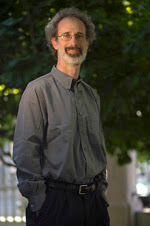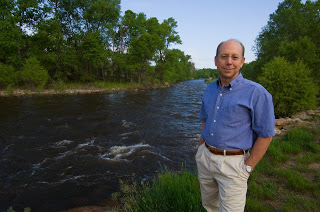RADIO ECOSHOCK SPECIAL ON CALIFORNIA DROUGHT Despite recent rains, California’s reservoirs are near empty, snow-pack light, and groundwater depleted. Four experts on a drought that really started in 2006, impacts on economy, food, farming, and nature. Guests: Dr. Peter Gleick, Dr. Jay Famiglietti, David Schroeder, Dr. Reagan Waskom
THE CALIFORNIA DROUGHT IS NOT OVER!
Rainstorms finally arrived in California, after a 14 month drought with no significant rain. But the big reservoirs are still pitifully low, and snow pack is less than a quarter of normal. Hundreds of thousands of acres will not be planted, and food bills will likely go up in North America, and possibly around the world.
This is the Radio Ecoshock special on the California drought, as a case study of what we can expect in many parts of the Earth. I’ve lined up 4 experts all with something new for you.
Dr. Peter Gleick is a climate and water specialist who has been warning this could happen for years.
Dr. Reagan Waskom is another water and agriculture expert from Colorado.
We connect with boots-on-the ground water conservation specialist David Schroeder in Montclair, right on the edge of thirsty Los Angeles.
Finally, we get back to the big picture, as Professor Jay Famiglietti at University of California Irvine warns of
depletion of the ground water under one of the world’s biggest food producing areas. That’s a trend all over the world, as we race toward peak water.
Download/listen to this Radio Ecoshock show in CD Quality or Lo-Fi
PETER GLEICK: Is the drought climate change?
Our first guest is Dr. Peter Gleick. He’s president of the Pacific Institute in Oakland, California, one of the world’s leading independent think tanks on water issues. Peter is also a scientist known around the world.
Peter introduced the term “Bellwether Drought” for this event. We know climate change threatens the water cycle. Scientists believe the wet areas (like the UK!) will get wetter, and the dry areas like California, will get dryer. So the dice are loaded for more droughts to occur in this major food producing area.
Dr. Gleick points out we could say this drought started in at least 2006. There have been several drier-than-normal years since then. Scientists have found records showing California has experienced droughts lasting more than a hundred years in the past, in the 1100’s for example.
So we may be asking if human-induced climate change has triggered this drought cycle. The causes of regional weather events are complex. We have ocean currents, natural cycles like El Nino and El Nina, and changes to the Jet Stream. All of those, especially the Jet Stream (as shown by the work of Jennifer Francis et al at Rutgers) can be influenced by climate change.
It’s a Bellwether event because whether or not we can nail down direct causation by climate disruption – it’s a sure test of what is likely during the coming decades. As in Australia, it is possible Euro-humans arrived in California during a cyclical wet spell that was bound to end. But have we hastened that process?
I also talk with Peter about desalination, it’s promises and obstacles. A new desalination plant has been
build to feed the San Diego water system. But really, it’s so energy intensive and expensive that desalination cannot save the whole California agricultural system.
Peter Gleick is an influential scientist in many places. He talks about the global work his institute is involved in, and it’s heavy-duty stuff. It’s cool he Tweeted this program link out to his 11,000 plus followers.
You can download or listen to this 18 minute interview with Dr. Peter Gleick in CD Quality or Lo-Fi.
DR. JAY FAMIGLIETTI: Looking at the drought from space.
When the rains don’t fall in California, every one checks their wallet for rising food prices. But rain or not, cities and farmers are pumping out California groundwater at an alarming rate. Thanks to new satellite science, now we know how much of that unseen wealth has been depleted. It’s a problem for farmers and all humans all over the world, as we grab water stored over the ages, to keep us alive right now. At some point, the water runs out.
Dr. Jay Famiglietti is a Professor of Earth System Science, and Director of the Center for Hydrologic Modeling at the University of California, Irvine. He’s an expert’s expert.
When the federal government, and state agencies cut off water supplies, as they did just this past month, farmers don’t just roll over and die. All those who can start pumping up groundwater furiously. They’ve been doing that for decades, always at an increasing level. You may think ground water gets replenished with rains, but some of it was captured and contained over millions of years. When I have a glass of water in my village, that water is 100,000 years old.
So just like oil, ground water is a limited resource. When you run out, that’s it.
Amazing to tell, scientists can measure the rate of groundwater depletion in California from space. The twin GRACE satellites have shown the loss of mass in Greenland as the glaciers melt. Now scientists at the University of California Irvine report that California is setting new records for groundwater loss. The state is literally getting lighter.
Find out about the GRACE satellites here. Oh, and by the way, one of their top stories is the discovery that climate change is causing the Earth’s poles to migrate. Don’t believe that? Read about it here.
One result is the land starts to sink, once the water below is removed. That’s serious in the Sacramento delta, where so much of North America’s fruits and vegetables are grown. Once it goes too low, a rush of salt water, say from a storm surge, can take thousands and thousands of prime acres out of production.
Jay Familietti describes what we know. He says the average of prediction of when California will run out of groundwater at current rates is 60 years from now. After that, the glory days of big populations and big cities may be done. Some experts say it will come sooner than that.
That same story is being repeated, even worse, in countries like China and India. India is pumping out the water tables at an alarming rate. In both countries, as thousands of wells go dry, they drill deeper, and burn even more energy with bigger pumps, just to keep up. Some places are already out of water, and out of production.
Keep this story in mind as you build the big picture: peak groundwater. It’s coming.
By the way, I ask Dr. Famiglietti what happens to all the water we pump out for our fields and cities. Some of it goes into the ocean, to become salt water. The warmer atmosphere can hold 4% more water vapor already, since 1970, and that’s a huge amount. Other water ends up falling in those places that are already wet.
Don’t miss this 12 minute interview with Jay Famiglietti. It’s short but powerful. Listen or download in CD Quality or Lo-Fi
Read a key article by Dr. Famiglietti “Epic California Drought and Groundwater: Where Do We Go From Here?“. And check out his LA Times Op-Ed from 2013, “California’s water house of cards“.
DR. REAGAN WASKOM – Feeding the western food supply
I was referred to Dr. Waskom by Michael Cohen of the Pacific Institute. Even though Waskom is the University of Colorado in Fort Collins, he’s one of the country’s wisemen when it comes to water supplies and our food system.
Reagan Waskom is the Director of the Colorado Water Institute, and Chair of the Colorado State University Water Center.
It turns out Colorado supplies much of the water to Southern California. We are not talking about the big food production areas, but more the heavy populations in places like Los Anglees. So what happens in Colorado matters a lot to California.
The good news is there is a heavy snow pack this year in Colorado. How useful that is depends on how fast the snow melt is, among other factors.
I ask Dr. Waskom what happens if California really is in a long-term drought. Could we replace all that food with farming somewhere else in the country?
Dr. Waskom has also been studying the big use of water by the fracking industry. We touch on that.
My final question is more personal: “You’ve taught a lot of students, and graduate students. Do you think young people are more disconnected from natural reality than when you were growing up?”
I learned a lot just talking with the man. You probably will too. Download this 17 minute interview in CD Quality or Lo-Fi.
DAVID SCHROEDER on the ground outside of LA
I wanted to get you some reporting from right on the ground in southern California. Acting on a tip from a Radio Ecoshock listener, we’ve reached David Schroeder. He’s a Water Conservation Specialist with the Chino Basin Water District. That’s based in Montclair California, right on the edge of one of America’s biggest cities, Los Angeles.
We talk about where water for southern California comes from, and what to do when it doesn’t. Dave specializes in getting the public involved in tearing up grass to install natural vegetation, to use less water in the home, and so on. There isn’t much farming left in the south of the state. Now the challenge is huge cities and endless suburbs.
Dave lives in the mountains that used to be white with snow in winter, when I lived in L.A. many moons ago. No snow there this year he reports. That’s not good news for the coming fire season, for anything.
Download/listen to this 10 minute interview with David Schroeder in CD Quality
WRAP UP
That wraps up my Radio Ecoshock special on the California drought, 2014. I hope you learned, as I did, about where our water comes from, where it’s going, and the dangerous tightrope we walk trying to feed a growing world population during climate disruption.
Radio Ecoshock is provided free to more than 75 non-profit radio stations. I depend on your financial help to keep going. Find ways to support this program in this blog, and at the show archive and web site, ecoshock.org
I’m Alex Smith. As always, thank you for listening, and caring about your world.


